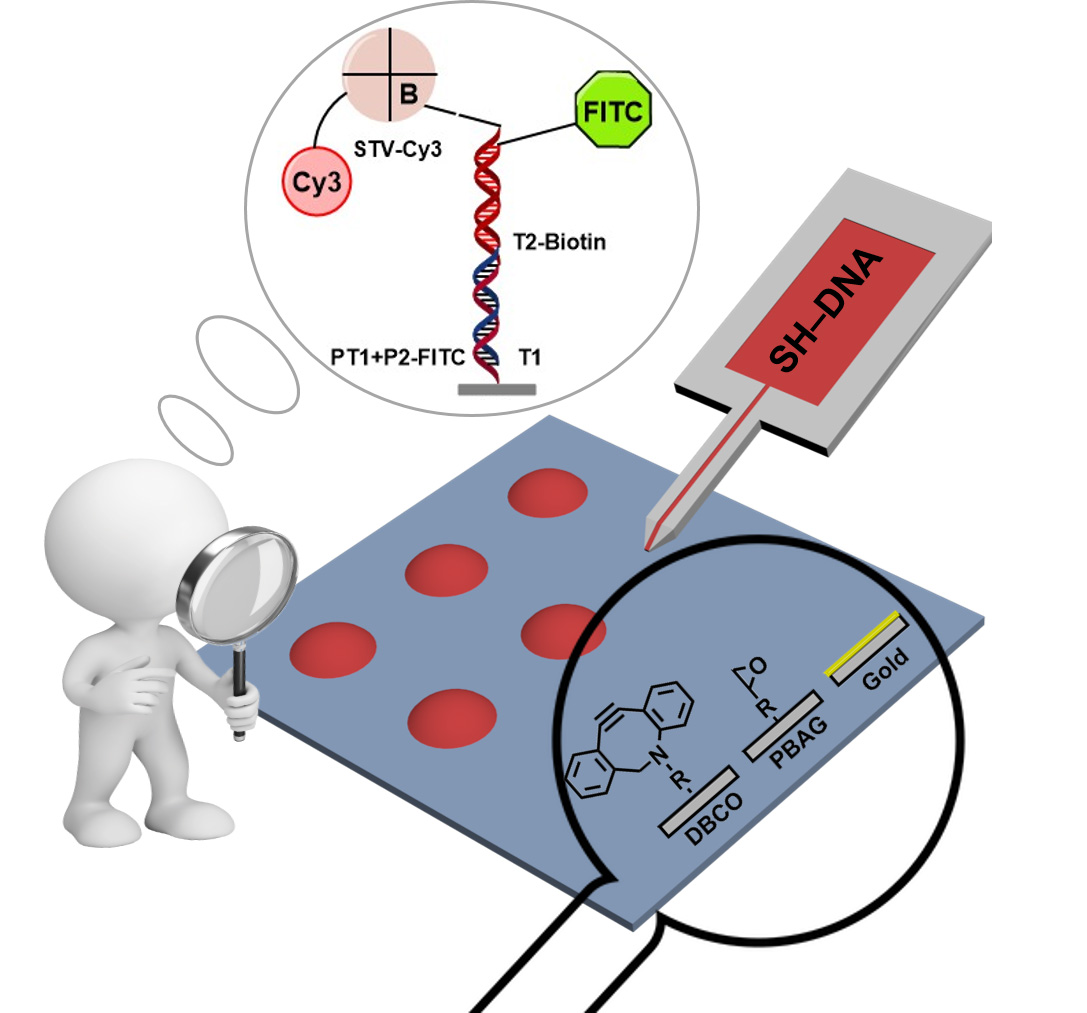
Fluorescence Imaging Study of Film Coating Structure and Composition Effects on DNA Hybridization
-
Author:
B. Yang, K. Gordiyenko, A. Schäfer, S. M. M. Dadfar, W. Yang, K. Riehemann, R. Kumar, C. M. Niemeyer, M. Hirtz
-
Source:
Adv. NanoBiomed Res. 3 (2023) 2200133
- Date: 2023
-
Hybridization of surface-bound DNA with complementary strands is the basis of many biotechnological applications. Herein, the structure of interfacial coatings between substrate and bound DNA is a crucial element for hybridization behavior. Herein, three reactive surfaces for constructing DNA-sensing platforms, namely, plain gold films on silicon, poly(bisphenolA-co-epichlorohydrin) (PBAG) surfaces with a brush-like bilayer structure, and dibenzocyclooctyne monolayers (both on glass), are compared. Fluorescence imaging is employed to survey the effect of coating structure and conformation on hybridization performance. To better understand the interfacial structural properties and chemistry of the coated films, atomic force microscopy, water contact angle measurements, and X-ray photoelectron spectroscopy are employed to characterize the surface morphology. DNA probe microarrays are created on the different platforms via microchannel cantilever spotting, and their performance for hybridizing with the DNA counterparts is assessed. While all three platforms work reliable for DNA detection, a protein-binding assay reveals that PBAG surfaces offer the highest hybridization efficiency among these approaches. The results of the present work have significant implications for comprehension of the interactions between the DNA hybridization efficiency and the physico-chemical properties of surface coatings and can inform the fabrication of DNA sensors.
